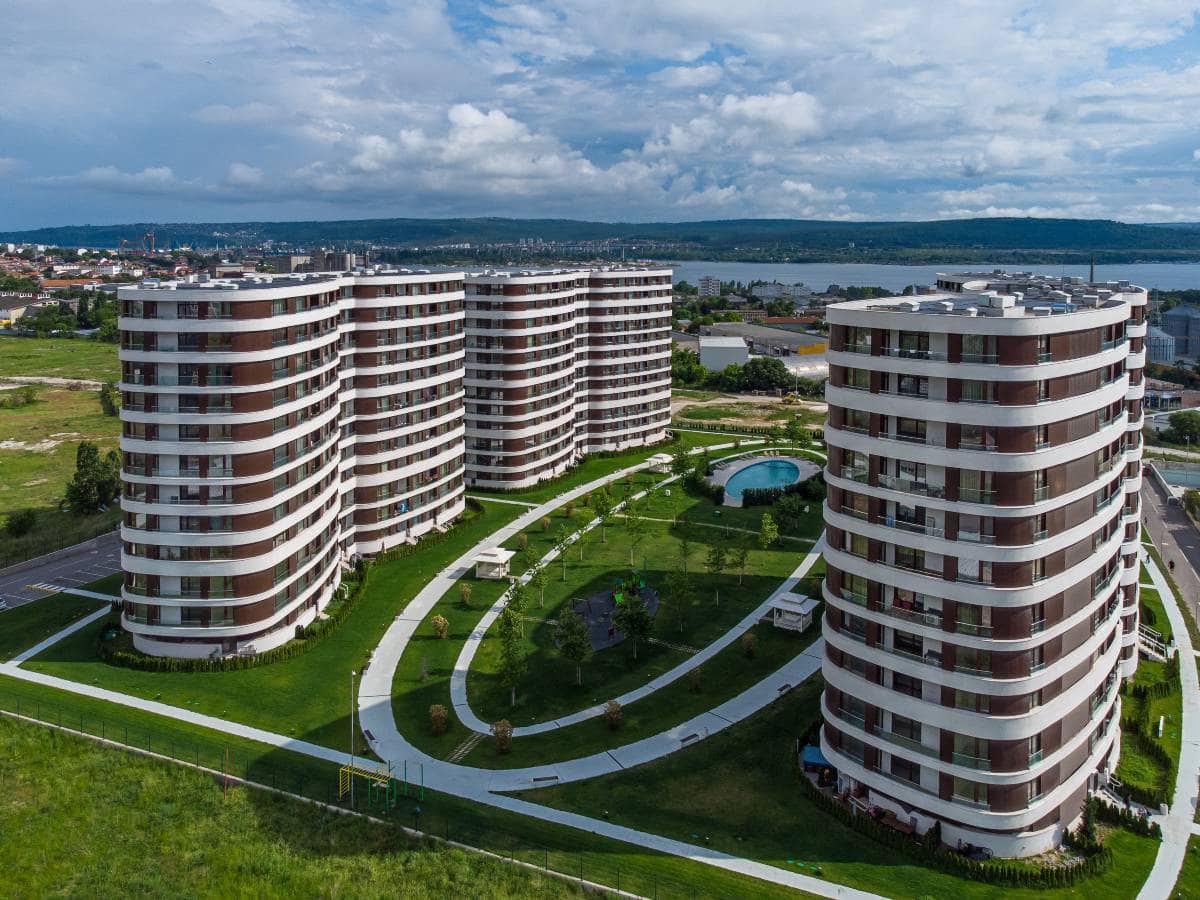In the wake of seismic shifts in work culture, the commercial real estate landscape is undergoing a remarkable transformation. As a seasoned professional with over 18 years in the industry, I’ve witnessed firsthand the dramatic decline in office occupancy. Recent data reveals that the average number of days Americans spend in an office has plummeted by over 30%. This startling statistic underscores the urgent need for adaptive strategies in urban development. Office-to-residential conversions have emerged as a compelling solution, addressing both the surplus of vacant office spaces and the growing demand for urban housing. Let’s delve into this fascinating trend that’s reshaping our cities.
Key Takeaways
- Office-to-residential conversions are transforming urban landscapes, driven by remote work trends and housing demand.
- Successful conversions require comprehensive strategies, including feasibility studies, stakeholder collaboration, and innovative design solutions.
- Environmental impact, financial modeling, and technological innovations play crucial roles in modern conversion projects.
Table of Contents
Expert Insights, Exceptional Outcomes
Transform challenges into opportunities with Tolj Commercial’s consultation services. Our tailored advice empowers you to make decisions that drive long-term success.
Understanding the Market Dynamics
The current state of the office market is a tale of unprecedented change. Vacancy rates in major cities have skyrocketed, with some areas seeing figures as high as 20%. This surge in empty offices isn’t just a temporary blip – it’s a reflection of a fundamental shift in how we work.
On the flip side, the demand for urban housing continues to soar. Millennials and young professionals are flocking to city centers, seeking vibrant communities and shorter commutes. This creates a perfect storm of opportunity for savvy developers and investors.
Economic factors driving these conversions include:
- The rise of remote and hybrid work models
- Increased focus on work-life balance
- Growing preference for urban living among younger generations
- Potential for higher returns on residential properties in prime locations
As someone who’s been in the trenches of commercial real estate for nearly two decades, I can tell you that this convergence of factors is unlike anything we’ve seen before. It’s not just about adapting to a trend – it’s about reimagining the very fabric of our urban centers.
Benefits of Office-to-Residential Conversions
The advantages of transforming offices into homes extend far beyond just filling empty spaces. Let’s break down some of the key benefits:
- Urban Revitalization: By breathing new life into vacant buildings, we’re not just creating homes – we’re rejuvenating entire neighborhoods. I’ve seen firsthand how a single successful conversion can spark a domino effect of positive change in a community.
- Sustainable Development: In an era where environmental impact is paramount, repurposing existing structures is a win for sustainability. We’re reducing the need for new construction, which means less carbon footprint and more efficient use of resources.
- Cost-Efficiency: While conversion projects aren’t without their challenges, they often prove more economical than ground-up construction. The existing infrastructure can be a goldmine of savings when approached strategically.
- Preservation of Architectural Heritage: Many office buildings, especially in historic districts, boast unique architectural features. By converting these spaces, we’re not just creating homes – we’re preserving pieces of our cities’ histories.
As someone who’s guided numerous clients through property transitions, I can attest to the transformative power of these conversions. It’s not just about changing a building’s purpose – it’s about crafting spaces that enhance people’s lives and revitalize communities.
Challenges in Office-to-Residential Conversions
While the benefits are compelling, it’s crucial to acknowledge the hurdles in this process. As someone who’s navigated these waters, I can tell you that each project comes with its unique set of challenges:
Structural and Design Limitations
- Floor plate configurations: Office buildings often have deep floor plates that can be tricky to adapt for residential use. Natural light and ventilation become critical concerns.
- Window access: Many offices have limited window space, which isn’t ideal for creating inviting living spaces.
Zoning and Regulatory Hurdles
Navigating the maze of local zoning restrictions and building codes can be daunting. Each city has its own set of rules, and sometimes, getting the necessary approvals feels like solving a Rubik’s cube blindfolded.
Financial Considerations
Conversion costs can be substantial. From upgrading electrical systems to installing kitchens and bathrooms, the expenses can add up quickly. It’s crucial to have a solid financial modeling strategy in place.
Building Systems Adaptation
Transforming an office’s HVAC, plumbing, and electrical systems to meet residential standards is no small feat. It’s like teaching an old dog new tricks – possible, but often requiring significant effort and investment.
Despite these challenges, I’ve seen numerous projects overcome these obstacles through innovative thinking and collaborative problem-solving. The key is to approach each conversion with a blend of creativity and pragmatism.
Best Strategies for Successful Conversions
Now, let’s dive into the strategies that can turn a challenging conversion project into a resounding success:
- Comprehensive Feasibility Studies: Before diving in, conduct thorough assessments. This includes structural evaluations, market analyses, and financial projections. As the saying goes, measure twice, cut once.
- Collaborative Approach with Stakeholders: Engage with local authorities, community groups, and potential residents early in the process. Their insights can be invaluable in shaping a project that truly meets the needs of the community.
- Leveraging Government Incentives: Many cities offer tax breaks or other incentives for conversion projects. Stay informed about these opportunities – they can make a significant difference in your project’s viability.
- Innovative Design Solutions: Think outside the box when it comes to space optimization. Consider:
- Flexible floor plans
- Communal spaces that foster a sense of community
- Incorporating smart home technology for modern living
- Sustainable Retrofitting: Focus on energy efficiency upgrades. This not only appeals to environmentally conscious residents but can also lead to long-term cost savings.
- Amenity Integration: Modern residents expect more than just a place to sleep. Consider incorporating:
- Co-working spaces
- Fitness centers
- Rooftop gardens or communal areas
By implementing these strategies, you’re not just converting a building – you’re creating a living, breathing community that can thrive for years to come.

Environmental and Social Impact Assessment
In today’s world, the impact of our projects extends far beyond the physical structure. Let’s consider the broader implications:
Carbon Footprint Reduction
By repurposing existing buildings, we’re significantly reducing the carbon footprint associated with new construction. It’s estimated that adaptive reuse can cut carbon emissions by up to 50% compared to new builds.
Community Benefits
Successful conversions can:
- Increase housing availability in urban areas
- Create more diverse, mixed-use neighborhoods
- Reduce commute times and associated emissions
Impact on Local Infrastructure
It’s crucial to assess how these conversions will affect:
- Local transportation systems
- Utilities and public services
- Community dynamics and social integration
As developers, we have a responsibility to ensure our projects contribute positively to the urban ecosystem. It’s not just about creating homes – it’s about fostering sustainable, livable communities.
Financial Modeling and ROI Analysis
Let’s talk numbers – after all, successful conversions need to make financial sense. Here’s what you need to consider:
Conversion Costs vs. New Construction
- Typically, conversions cost 30-40% less than new builds
- However, each project is unique – thorough cost analysis is crucial
Long-term Value Proposition
- Consider the potential for appreciation in urban areas
- Factor in lower vacancy rates for residential vs. commercial in many markets
Revenue Streams
- Rental income potential
- Possibility of mixed-use elements (e.g., ground floor retail)
Occupancy Projections
- Analyze local housing demand trends
- Consider target demographic preferences
ut immediate returns – it’s about creating lasting value for investors and residents alike.
Case Studies of Successful Conversions
Let’s look at some real-world examples that showcase the potential of office-to-residential conversions:
- New York City: The Financial District has seen numerous successful conversions, including 20 Broad Street, a former New York Stock Exchange building transformed into luxury apartments.
- London: The Alphabeta Building in Shoreditch combines office, retail, and residential spaces, creating a vibrant mixed-use environment.
- Sydney: The Griffiths Teas Building, a heritage-listed former tea warehouse, was converted into stylish apartments while preserving its historic facade.
Key lessons from these projects include:
- The importance of preserving architectural character
- The value of mixed-use elements in creating vibrant communities
- The need for flexible design to accommodate diverse resident needs
These case studies demonstrate that with vision and careful planning, even the most challenging conversions can become standout successes.
Technological Innovations in Conversion Projects
Technology is revolutionizing how we approach these conversions:
3D Modeling and Virtual Reality:
- Allows for immersive pre-construction visualization
- Helps in identifying and solving design challenges early
Smart Home Integration:
- IoT devices for energy management
- Advanced security systems
- Voice-controlled home automation
Advanced Materials:
- Soundproofing solutions for better acoustics
- Energy-efficient windows and insulation
These technological advancements not only make the conversion process more efficient but also result in more appealing and functional living spaces for residents.
Marketing and Branding Strategies
Creating a compelling narrative is crucial for the success of converted properties:
Positioning in the Market
- Highlight unique features (e.g., high ceilings, large windows)
- Emphasize the blend of historic charm and modern amenities
Leveraging Historical Significance
- Tell the story of the building’s past
- Create a sense of connection to the city’s heritage
Targeted Marketing
- Focus on demographics likely to appreciate urban living
- Utilize social media and virtual tours to showcase the space
Remember, you’re not just selling an apartment – you’re selling a lifestyle and a piece of the city’s history.

Future Outlook and Trends
As we look to the future, several trends are shaping the landscape of office-to-residential conversions:
- Continued Growth: With remote work becoming more entrenched, we can expect the demand for these conversions to remain strong.
- Regulatory Changes: Many cities are adapting zoning laws to facilitate conversions, recognizing their potential to address housing shortages.
- Sustainability Focus: Future projects will likely place even greater emphasis on green technologies and sustainable living.
- Mixed-Use Developments: We’re seeing a trend toward creating multi-purpose spaces that combine living, working, and recreational areas.
- Adaptive Design: Future conversions may incorporate more flexible layouts to accommodate changing lifestyles and work patterns.
As someone who’s been in this industry for nearly two decades, I can say with confidence that office-to-residential conversions represent one of the most exciting and impactful trends in urban development. They offer a unique opportunity to reimagine our cities, creating vibrant, sustainable communities for the future.
Expert Insights, Exceptional Outcomes
Transform challenges into opportunities with Tolj Commercial’s consultation services. Our tailored advice empowers you to make decisions that drive long-term success.
FAQs
What types of office buildings are best suited for residential conversion?
Buildings with good natural light, manageable floor plate depths, and adaptable structural layouts tend to be ideal candidates. Historical buildings often offer unique architectural features that can add character to residential units.
How long does a typical office-to-residential conversion take?
The timeline can vary greatly depending on the scale and complexity of the project. On average, expect anywhere from 12 to 24 months from initial planning to completion.
Are there any government incentives available for these conversion projects?
Many cities and states offer incentives such as tax credits, zoning bonuses, or expedited permitting processes. It’s crucial to research local programs as they can significantly impact project feasibility.
How do conversion costs compare to new residential construction?
Generally, conversions can be 20-30% less expensive than new construction, but this can vary based on the specific building and required modifications. A thorough cost analysis is essential for each project.
What are the main challenges in marketing converted office spaces as residential units?
Key challenges include overcoming perceptions about living in former office spaces, educating potential residents about the benefits of adaptive reuse, and highlighting unique features that set these units apart from traditional residential offerings.
Conclusion
The transformation of office spaces into residential units is more than just a trend – it’s a revolution in urban living. As we’ve explored, these conversions offer a wealth of benefits, from revitalizing city centers to promoting sustainable development. While challenges exist, innovative strategies and technologies are paving the way for successful projects.
As a professional deeply entrenched in this field, I’ve witnessed firsthand the transformative power of these conversions. They’re not just changing buildings; they’re reshaping communities and redefining urban lifestyles.
Whether you’re a developer, investor, or simply someone interested in the future of our cities, the world of office-to-residential conversions offers exciting possibilities. It’s a field ripe with opportunity for those willing to think creatively and embrace change.
Ready to explore how you can be part of this urban transformation? Let’s talk about your next project or investment opportunity. Schedule a consultation with me, and let’s discuss how we can turn vacant offices into thriving residential spaces. Together, we can be at the forefront of reimagining our urban landscape for the better.




